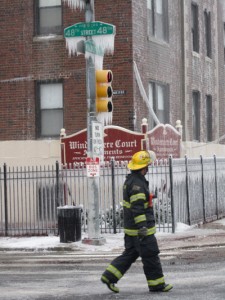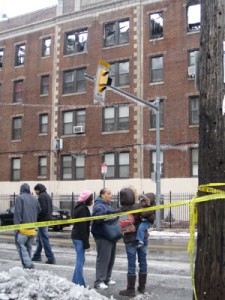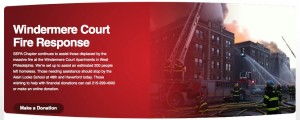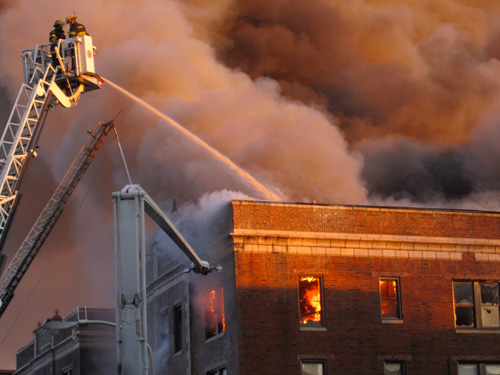12:25 p.m.: We just stopped by the Salvation Army center at 5501 Market St. and confirmed that they are accepting donations of clothing and other household items. The entrance to the center is on Arch St. They are open until 4 p.m. today and open at 9 a.m.
11:03 a.m.: We just heard that the Salvation Army center at 5501 Market St. is accepting donations of anything accept furniture. We are trying to confirm that. Their phone number is 215-474-1010.
10:35 a.m.: We just got off the phone with the Red Cross and the Salvation Army. The Red Cross, again, suggested making donations at their website and urged people NOT to bring cash to the shelter at the Locke School at 46th and Haverford. The Salvation Army will issue vouchers to victims to shop for clothing at the Salvation Army Thrift Store (likely the one at 2140 Market). The person at the Salvation Army headquarters suggested dropping off clothes there. We’re now told that the best place to drop off donations is at the Salvation Army Center at 5501 Market St.
9:10 a.m.: We just returned from the fire scene. Firefighters are still spraying the northeast corner of the building. A firefighter we talked to said it would probably be “a couple of days” before residents will be allowed back in their homes to retrieve belongings. The heaviest damage seems to be the northwest corner of the building, where at least two floors are destroyed. That’s where the fire was heaviest when we arrived yesterday about 3:45 p.m. It spread east from there.
Just a reminder that West Philadelphia High School and Henry C. Lea Elementary are both closed today in the aftermath of the fire yesterday at the Windermere Court  Apartments complex at 48th and Walnut Streets. Also, SEPTA has rerouted the 21, 31 and 64 buses around the scene. We’re still trying to track down the exact detour route and we will post here when the routes are restored.
Apartments complex at 48th and Walnut Streets. Also, SEPTA has rerouted the 21, 31 and 64 buses around the scene. We’re still trying to track down the exact detour route and we will post here when the routes are restored.
Many victims of the fire, which displaced folks from 89 apartments, are staying at an emergency shelter set up at the Locke School at 46th and Haverford. Red Cross workers will provide counseling and services there this morning, including the passing out of emergency debit cards. Red Cross Philly has asked those who want to help to donate money at its website.
Given what has happened in the past here with big fires, though, we suspect there might be some help organized in the neighborhood. Please let us know in the “comments” if you hear of anything.
We will continue to update this story as details come in so check back and send us any info you want to share with neighbors to editor – at – westphillylocal.com.
Here’s a banner running at the Red Cross website (click to enlarge):










Recent Comments